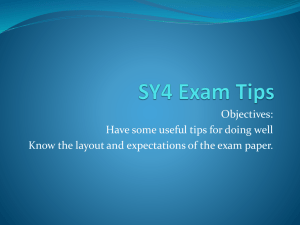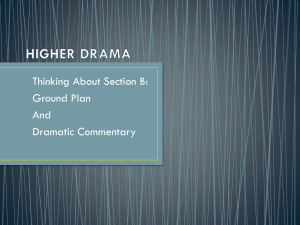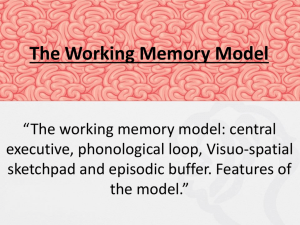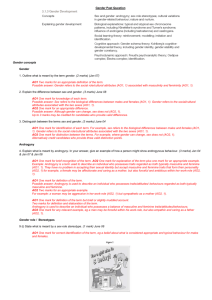Slide 1
advertisement
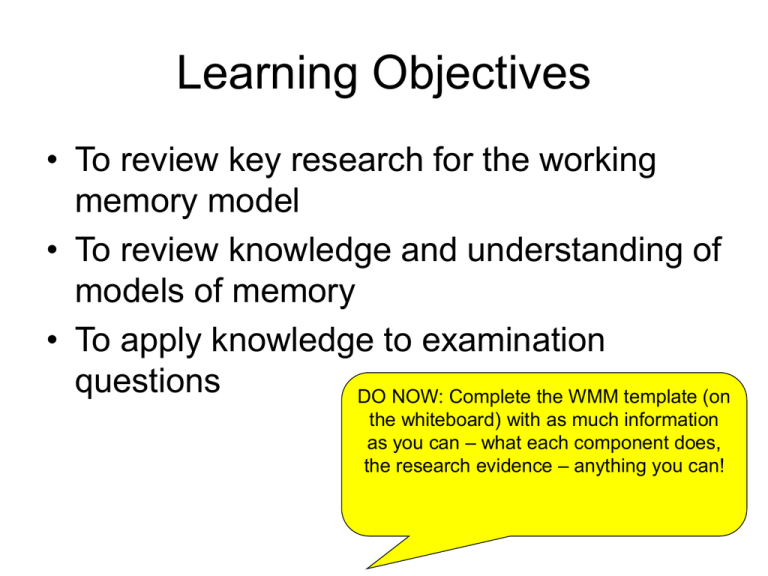
Learning Objectives • To review key research for the working memory model • To review knowledge and understanding of models of memory • To apply knowledge to examination questions DO NOW: Complete the WMM template (on the whiteboard) with as much information as you can – what each component does, the research evidence – anything you can! Starter • Memory game! DIFFERENCE: MSM proposes that STM is a passive store which can simply hold information temporarily, the WMM provides us with a more active model of human processing where information can be manipulated. DIFFERENCE: MSM proposes that STM is a single unitary store, WMM proposes that it is made up of several distinct components with separate functions Levels of Processing DIFFERENCE: A negative evaluation of the MSM is that we remember things we haven’t rehearsed. This is explained by the LoP explanation which states that (i) the type of information is important in rememberingsemantic information is remembered best (ii) the idea of maintenance rehearsal leads to poorer recall than elaborative rehearsal Introduction: the following are all key terms / pieces of information from yesterday’s lesson • • • • Dual tasks Word length effect Articulatory suppression Sub-system Make a note of what each key term means! Think, Pair, Share: What is meant by each one of the key terms? Past Paper Questions: Memory • Q1 According to the multi-store model, there are differences between short-term memory and long-term memory. Outline one way in which short-term memory and long-term memory differ. (2 marks) • Q2 A researcher is investigating the levels of processing model of memory. He shows participants words printed on cards. Each card has a different word, for example ‘SACK’, ‘fake’ and ‘bread’. After each word, he asks one of the following three questions: A: “Can you eat it?” B: “Is it in capitals?” C: “Does it rhyme with ‘lake’?” For each of the three questions (A, B and C), indicate which level of memory is most likely to be used when participants respond. o o o • Q3 Describe one study in which the working memory model was investigated. Indicate why the study was conducted, the method used, the results obtained and the conclusion drawn. (4 marks) • Q4 Describe and evaluate the working memory model. Refer to empirical evidence in your answer. (10 marks) [AO1 = 5 AO2 = 5] June 2009 PPQ • 1 According to the multi-store model, there are differences between short-term memory and long-term memory. Outline one way in which short-term memory and long-term memory differ. (2 marks) 1 According to the multi-store model, there are differences between short-term memory and long-term memory. Outline one way in which short-term memory and long-term memory differ. (2 marks) • [AO1 = 2] • AO1 One mark for identifying (by name or description) one difference and a further mark for relevant elaboration. • Likely answers: • Duration – lifelong in LTM/18/30 seconds STM; • Capacity – 7+/- 2 in STM/ unlimited for LTM; • Coding – mainly acoustic in STM/mainly semantic LTM; • Types of forgetting. June 2008 PPQ • 2 A researcher is investigating the levels of processing model of memory. He shows participants words printed on cards. Each card has a different word, for example ‘SACK’, ‘fake’ and ‘bread’. After each word, he asks one of the following three questions: • A: “Can you eat it?” • B: “Is it in capitals?” • C: “Does it rhyme with ‘lake’?” • For each of the three questions (A, B and C), indicate which level of memory is most likely to be used when participants respond. 2 A researcher is investigating the levels of processing model of memory. He shows participants words printed on cards. Each card has a different word, for example ‘SACK’, ‘fake’ and ‘bread’. • 1 AO1 mark each for identifying levels plus 1 AO2 mark each for correctly linking questions with levels as follows: • “Can you eat it?” - Semantic/deep • “Is it in capitals?” Structural/shallow/visual/orthographic • “Does it rhyme with ‘lake’?” Phonetic/phonological/acoustic • Note: if levels are correctly identified but not correctly linked, 1 mark for each level should be awarded. June 2009 PPQ • 3 Describe one study in which the working memory model was investigated. Indicate why the study was conducted, the method used, the results obtained and the conclusion drawn. (4 marks) 3 Describe one study in which the working memory model was investigated. Indicate why the study was conducted, the method used, the results obtained and the conclusion drawn. (4 marks) • [AO1 = 4] • AO1 • Likely studies include: Paulescu et al (1993), Logie et al (1989), Robbins et al (1996), • Hunt (1980), Brooks (1968), Baddeley, Thomson and Buchanan (1975), Hoosain and • Salili (1988), Hulme, Thomson, Muir and Lawrence (1984), Levey, Aldaz, Watts and • Coyle (1991), Baddeley et al (1998). • 1 mark – why the study was conducted (must go beyond the stem) • 1 mark – information about the method • 1 mark – indication of results • 1 mark – indication of a conclusion to be drawn January 2009 • 4 Describe and evaluate the working memory model. Refer to empirical evidence in your answer. (10 marks) [AO1 = 5 AO2 = 5] 4. Describe and evaluate the working memory model. Refer to empirical evidence in your answer. (10 marks) • • • • • • AO1 Up to 5 marks for description with up to 3 marks for definition/description of features of the model: a central executive with series of subsystems which are named/described: articulatory loop/articulatory control system/‘inner voice’; primary acoustic/phonological store/‘inner ear’; visuo-spatial sketchpad/scratchpad/‘inner eye’; phonological loop; limited capacity; episodic buffer; limited/short duration/ short term memory. Description of how model works, eg the central executive allocates data to slave systems, or the idea that dual tasks are unimpaired if they rely on different subsystem/slave components. Credit description of relevant studies up to 2 marks. Likely studies include: Brooks (1968), Baddeley, Thomson and Buchanan (1975), Hoosain and Salili (1988), Hulme, Thomson, Muir and Lawrence (1984), Levey, Aldaz, Watts and Coyle (1991), Paulesu et al (1993), Baddeley et al (1998). AO2 Up to 5 marks. Application of knowledge of the model to examples, eg use of articulatory loop as temporary store for short sequences of words or digits, use of VSS for navigation. Analysis of the implication of studies. Evaluation of the model including support from studies and practical application/relevance and comparison with other models eg, the multistore model view of STM. Plenary • Peer review of the questions • One achievement, one target
